Have you ever wondered the difference between each type of fabric and where they should be used? Here is everything you need to know.
Fabrics complete the look of a room. A room could be full of furniture and nick knacks and will still look bare without the use of fabric. You can take the look of a room from rags to riches by changing the soft furnishings. The theme of the room can be changed from bohemian to opulent, just by changing the furniture coverings.
The key to a comfortable and relaxing environment at home is in the kind of upholstery chosen for the sofa, bed covers, curtains and drapes. It is possible to get the right ambiance and the desired look by using the right fabric combination. A room that is only used for entertaining can have delicate fabric but a room that is used by toddlers and pets needs sturdy and washable fabric. You also have to keep in mind the amount of sunlight the room gets. Moreover, personal choice, the personality of the owner and the depth of his/her pockets are all-important factors in the selection of a perfect fabric.
Broadly speaking, fabrics fall into two categories. Fabrics are derived from natural sources or man-made fabrics. However, there is a third category that is very popular as well, the blend. As the term suggests, it is a blend of natural and man-made fabric. It offers you the breathability and texture of natural fabric and the sturdiness of man-made fabric. The weave of thread further categorizes the fabric. Due to the quality of the thread, the variation in the weave and the finish of the fabric, the end products look very different from one another.
Natural Fabrics
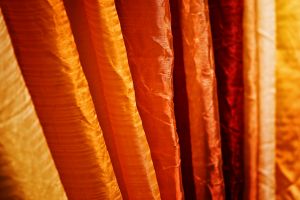 Natural fabrics come from different sources. Cotton and linen come from plants. Both fabrics are cool, soft to the touch and comfortable. They are highly absorbent, breathable, and can withstand high temperatures. Damask, gingham, velvet and tapestry are suitable for upholstery whereas satin and percale are ideal for tablecloths and bed linen. Pima cotton, muslin and lawn are thinner fabrics making them more suitable for curtains, drapes, valances, blinds and tablecloths.
Natural fabrics come from different sources. Cotton and linen come from plants. Both fabrics are cool, soft to the touch and comfortable. They are highly absorbent, breathable, and can withstand high temperatures. Damask, gingham, velvet and tapestry are suitable for upholstery whereas satin and percale are ideal for tablecloths and bed linen. Pima cotton, muslin and lawn are thinner fabrics making them more suitable for curtains, drapes, valances, blinds and tablecloths.
For centuries silk has had a reputation as a luxurious and sensuous fabric, one associated with wealth and success. Silk is one of the oldest textile fibers known to man. The Chinese have used it since the 27th century BC. Silk has a rich look and touch to it. It has superb texture and luster. Brocade, damask and taffeta are ideal for tailored curtains, pelmets and cushions, whereas organza is the most suitable for drapes and bed skirts.
Wool comes from fibers of animal coats, such as sheep, goats, rabbits, alpacas and llamas. Woolen fabrics are warm, have a soft feel and fuzzy surface, very little shine or sheen and will not hold a crease. They are heavier and bulkier than other fabrics. Tweed, tartan and mohair can be used for upholstery, curtains and pelmets, whereas jacquard tapestry is only suitable for upholstery.
Manmade Fabrics
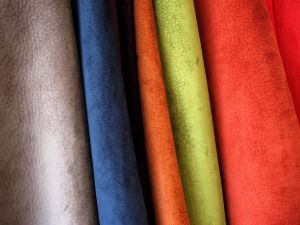 Nylon, polyester, rayon, viscose and acrylic are man-made fabrics. They are manufactured either as 100% synthetic or are blended with natural fabrics. The blends have a more natural feel to them, are easier to care for and have better fall than the natural ones. Most of the fabrics available in the market are blends. Blends hold their shape and do not need much maintenance. They are colorfast and are washable at home.
Nylon, polyester, rayon, viscose and acrylic are man-made fabrics. They are manufactured either as 100% synthetic or are blended with natural fabrics. The blends have a more natural feel to them, are easier to care for and have better fall than the natural ones. Most of the fabrics available in the market are blends. Blends hold their shape and do not need much maintenance. They are colorfast and are washable at home.
Micro fibers are now very popular in the garment and upholstery industry. Their popularity can be attributed to their strength and durability and to their ability to repel moisture. Well-known families of micro fibers are ultra-suede and faux leather. They are highly durable as well as luxurious and imitate real suede and leather very well. These fabrics have revolutionized the textile industry. They are any designer’s first choice; they are Ideal for upholstery, curtain and drapes, pelmets, swags & tails, tiebacks, valances and blinds.
You can get the million-dollar look by spending a fraction of that and still let your children and dogs run amuck on the sofa. After all, all you have to do is wipe it clean and it will be as good as new. – Text by Lily Sokhi
A simple guide to help you learn the difference between each fabric.
If you are still at a loss as to which fabric to choose, here is a great cheat sheet from Collective Gen to help you decipher the difference between each type of fabric.
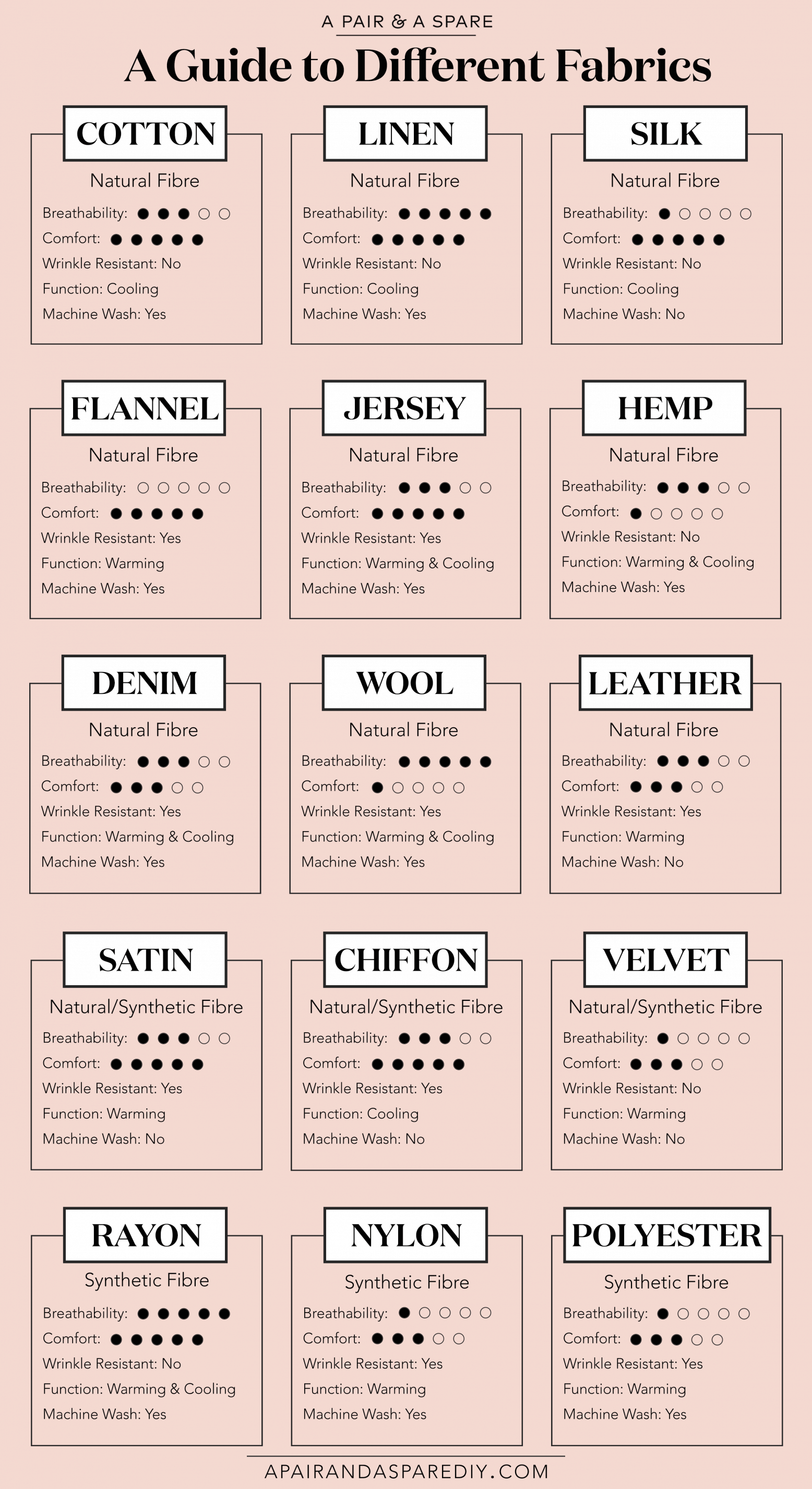
Learning the different pattern names
Selecting the perfect fabric type is not the only decision that needs to be made. Each fabric comes in a wide array of patterns. It’s best to learn basic pattern names to help you navigate your way through the world of textiles.
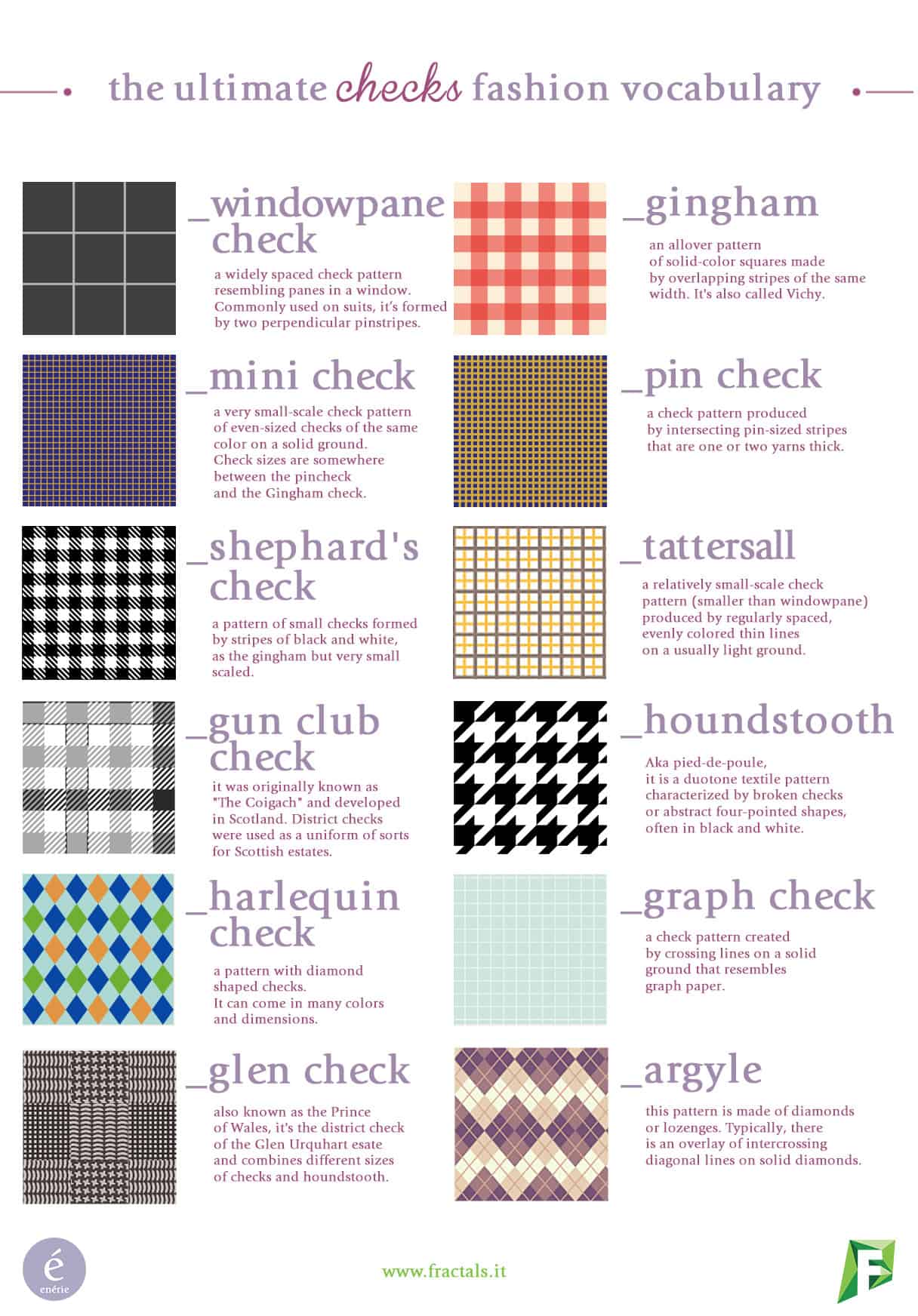
Photo Source: fractals.it
Personal favorite! Houndstooth is a safe choice for anyone starting out in the world of textile. It’s a classic choice that will withstand the test of time.
We can’t forget those trendy animal prints.
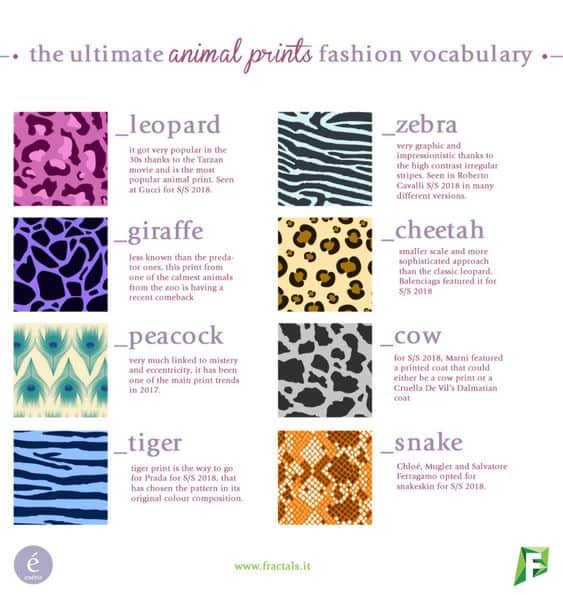
Photo Source: fractals.it
Personal favorite! Cheetah is definitely having its time in the spotlight. It’s a beautiful “neutral” that pairs with anything making it a great choice!
And a guide to everything striped and checked…
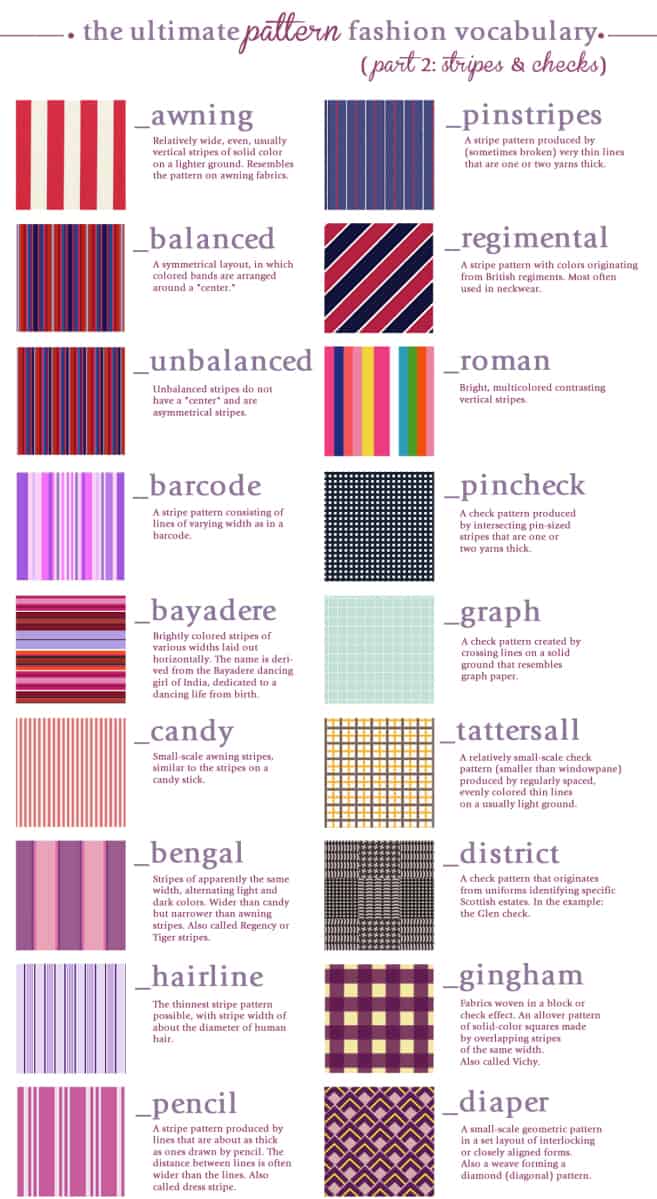
Photo Source: fractals.it
Personal favorite! Gingham is a classic choice that is sure to add formality to its fabric type while a hairline or pencil pattern will make any fabric elegant.
And some whimsical favorites…
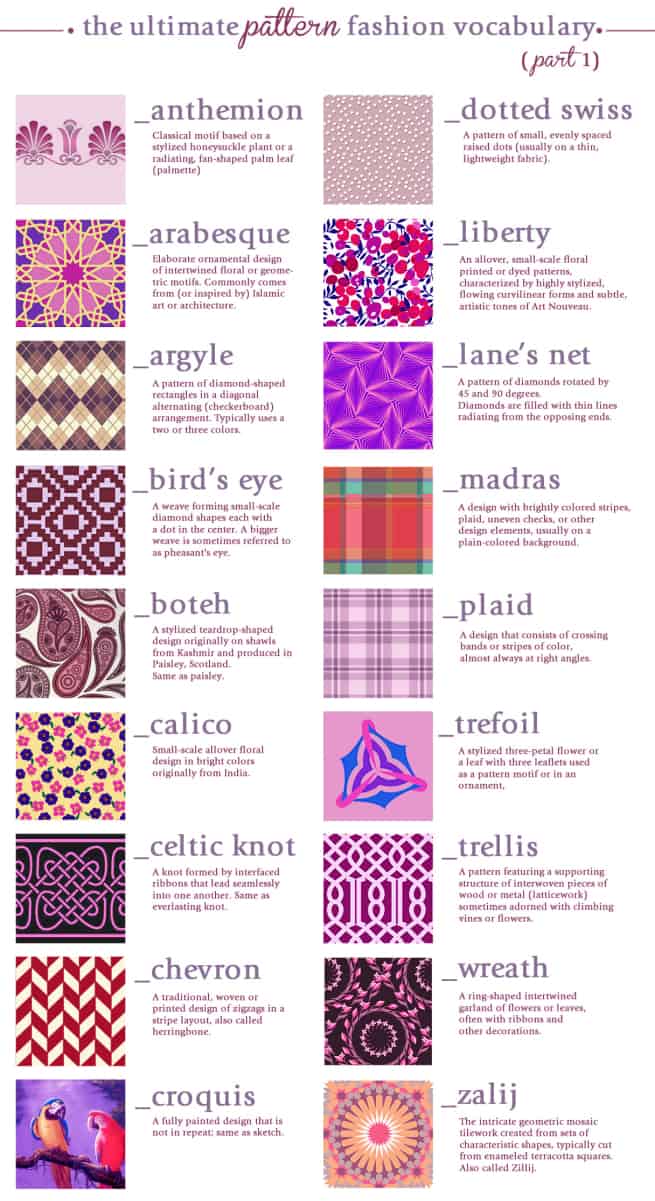
Photo Source: fractals.it
Personal favorite! You can’t go wrong with a fun chevron or bird’s eye. These are great options to add interest to any fabric!
BONUS! How do you make fabric?
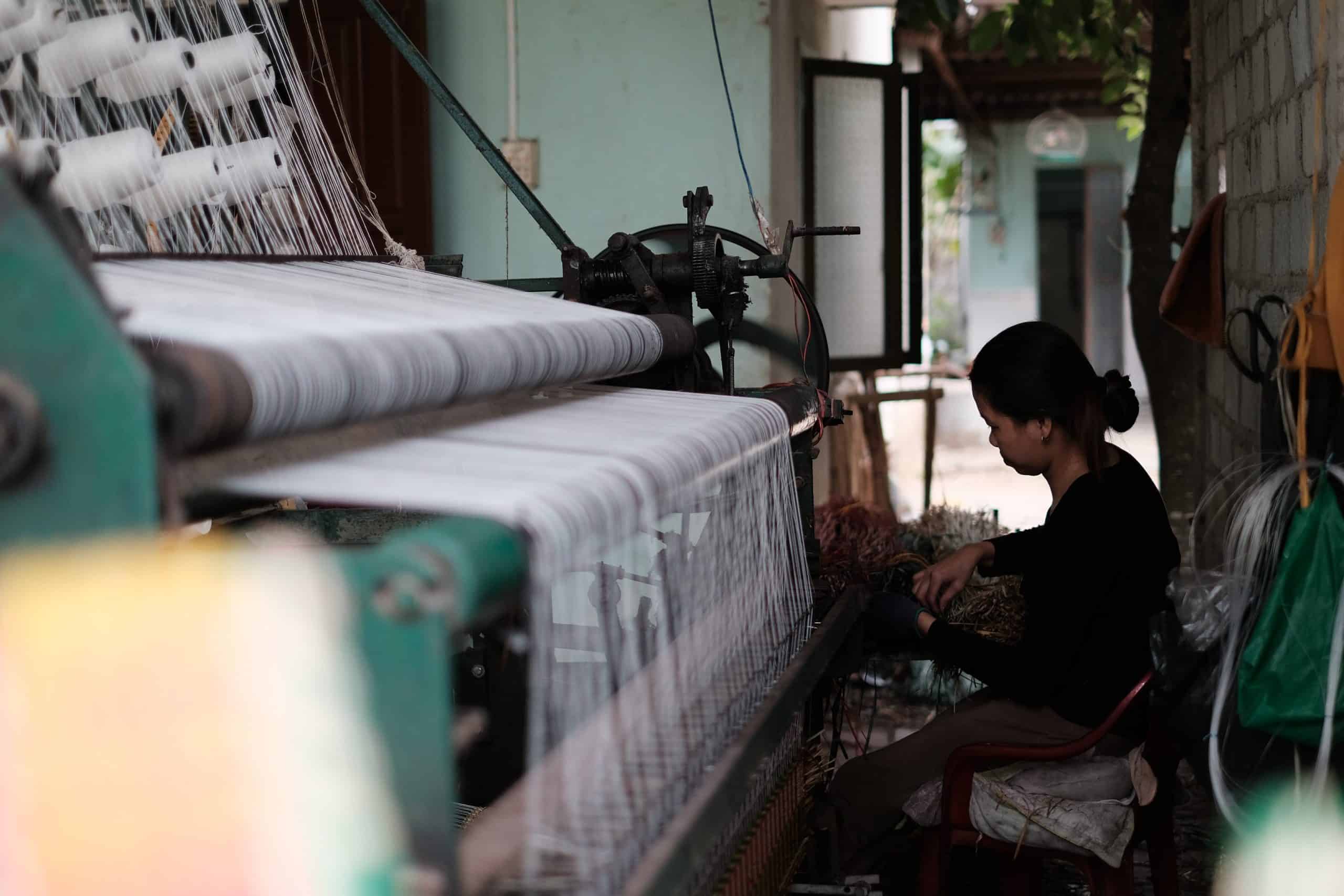
The basic process of making fabric comes from harvesting raw materials and transforming those materials into yarn or thread. The materials are spun together to create yarn and then fed onto a bobbin. Once the bobbin is full of thread or yarn, then the process of creating fabric begins. Two bobbins of thread are then weaved together to create fabric using a machine called a loom.
Latest posts by Canadian Home Trends (see all)
- Dining Room Design Tips - July 13, 2025
- Practical Luxury in Forest Grove - July 13, 2025
- The Hidden Value of Great Design - July 13, 2025







life is beautiful wearing gud fabrics
[…] You may not need to explore these things in the narrative, but they’re good to know about. This website gives a very brief introduction to natural and man-made […]
There are hundreds of thousands of fabrics available to the design community these days. Best advice is to understand how to best care for your chosen fabric to make it last.
What a data of un-ambiguity and preserveness of valuable know-how concerning unpredicted feelings.
nice
Good
Can someone please help me understand the difference between cottons please
Fabric material changes your look depend on your choice …lol